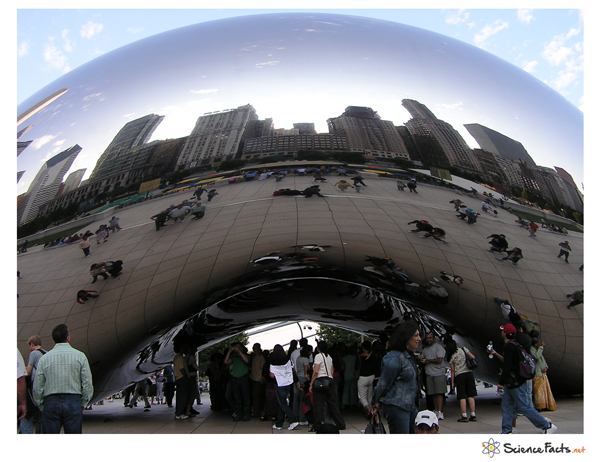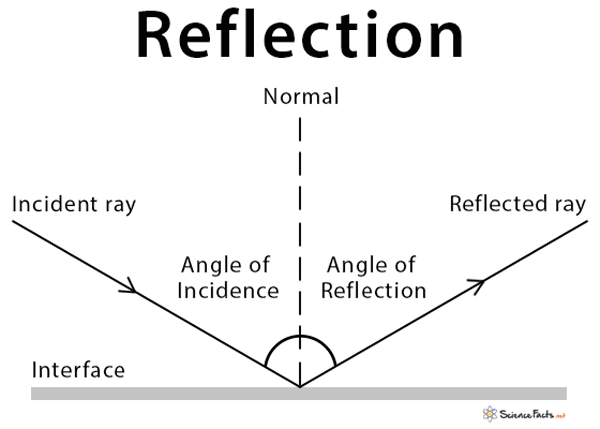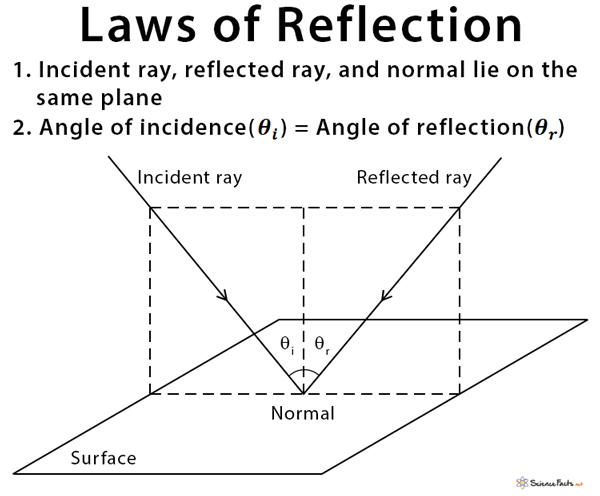Reflection
Definition: What is Reflection?
Reflection is a phenomenon in which a wave traveling through a medium reflects at the interface of another medium. In optics, reflection takes place when light is incident at the interface of the two media. The ray of light returns to the first medium without any change in velocity.

Examples of Reflection
- Light is reflected from an object reaches our eyes allowing us to see the object
- A mirror reflects light from an object reaches our eyes, thus allowing us to see the object through the mirror
- Reflection takes place in a plane mirror, concave mirror, and convex mirror.
Types of Reflection and Ray Diagram
There are two types of reflection: specular reflection and diffuse reflection.
Terms Used in Reflection
- Incident Ray: The ray of light that is incident on the interface.
- Reflected Ray: The ray of light that is reflected from the interface.
- Normal: The perpendicular to the interface.
- Angle of Incidence: The angle that the incident ray makes with the normal.
- Angle of Reflection: The angle that the reflected ray makes with the normal.
Specular Reflection
In the case of specular reflection, the angle of reflection is equal to the angle of incidence, thus giving a mirror-like reflection.
Diffuse Reflection
In the case of diffuse reflection, the incident ray reflects from the interface in all directions. In other words, the angles of reflections are different for each reflected ray.
Laws of Reflection
Two laws apply to specular reflection.
- The incident ray, the reflected ray, and the normal lie on the same plane.
- The angle of incidence is equal to the angle of reflection.
FAQs
Ans. Total internal reflection is a phenomenon in which a ray of light traveling from a denser medium to a rarer medium is reflected in the denser medium instead of refracting to the rarer medium.
Ans. Issac Newton invented the reflecting telescope in 1668.
Ans. Reflection symmetry or mirror symmetry is symmetry concerning reflection. A figure which does not change upon undergoing a reflection has reflectional symmetry.
Ans. Mirrors reflect because of the presence of free electrons, which makes mirrors electrically conductive. The silver atoms behind the glass absorb the photons of incoming light energy and become excited. However, that makes them unstable, so they try to become stable again by getting rid of the extra energy, and they do that by giving off some more photons. Silver reflects light better than anything else. It gives off as many photons as the amount falling on it. The photons that come out of the mirror are almost the same as the ones that go into it.
Ans. The light waves from an observer hit the different parts of the spoon at different angles, so they are all bent a little bit differently and reflect in different directions. By the time they come back to the observer, they have all bent differently. When the reflected rays intersect, they end up making the observer look upside down.
Article was last reviewed on Wednesday, March 9, 2022










